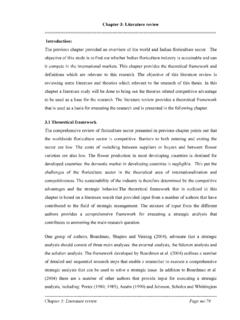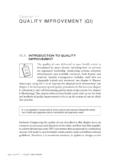Transcription of Interviewing and the Health History
1 chapter 2nINTERVIEWING AND THE Health HISTORY23 The Health History interview is a conversation with a purpose. As you learnto elicit the patient s History , you will draw on many of the interpersonalskills that you use every day, but with unique and important differences. Un-like social conversation, in which you can freely express your own needs andinterests and are responsible only for yourself, the primary goal of the clinician patient interview is to improve the well-being of the patient. At its most basiclevel, the purpose of conversation with a patient is threefold: to establish atrusting and supportive relationship, to gather information, and to offer 3 Relating effectively with patients is among the most valued skills of clinicalcare.
2 As a beginning clinician, you will focus your energies on gathering in-formation. At the same time, by using techniques that promote trust andconvey respect, you will allow the patient s story to unfold in its most fulland detailed form. Establishing a supportive interaction helps the patient feelmore at ease when sharing information and itself becomes the foundationfor therapeutic clinician patient illness can make pa-tients feel discouraged and isolated, A feeling of connectedness with thedoctor, of being deeply heard and understood, reduces this feeling of isola-tion and despair. This feeling is the very heart of healing. 5 This chapter introduces you to the essentials of Interviewing .
3 It emphasizes theapproach to gathering the Health History , but covers all the fundamental habitsthat you will continually use and refine in your conversations with patients. Youwill learn the guiding principles for skilled Interviewing and how to forge trust-ing patient relationships. You will read about preparing for the interview, thesequence of the Interviewing process, important Interviewing techniques, andstrategies for addressing various challenges that may arise in patient encoun-ters. To help you navigate this journey, look over the Interviewing Milestones,on the next page, that mark the complex tasks of a skilled a clinician facilitating the patient s story, you will come to generate a se-ries of hypotheses about the nature of the patient s concerns.
4 You will thentest these various hypotheses by asking for more detailed information. Youwill also explore the patient s feelings and beliefs about his or her , as your clinical experience grows, you will respond with your Interviewing and the Health HistoryCHAPTER224 BATES GUIDE TO PHYSICAL EXAMINATION AND History TAKINGI nterviewing MilestonesGetting Ready: The Approach to the InterviewTaking time for self-reflection. Reviewing the chart. Reviewing your clinicalbehavior and appearance. Adjusting the environment. Taking About the Patient: The Sequence of the InterviewGreeting the patient and establishing rapport. Inviting the patient s the agenda for the interview.
5 Expanding and clarifying the patient sstory. Creating a shared understanding of the patient s concerns. Negoti-ating a plan. Following up and closing the the Relationship: The Techniques of Skilled InterviewingActive listening. Guided questioning. Nonverbal communication. Em-pathic responses. Validation. Reassurance. Partnering. Empowering the Your Interview to Specific SituationsThe silent patient. The confusing patient. The patient with impaired capac-ity. The talkative patient. The angry or disruptive patient. Interviewingacross a language barrier. The patient with low literacy. The deaf or hard-of-hearing patient. The blind patient. The patient with limited patient seeking personal Topics that Call for Special SkillsThe sexual History .
6 Mental Health . Alcohol and drug use. Family and dying. Societal Aspects of InterviewingAchieving cultural competence. Sexuality in the clinician patient relation-ship. Ethical of the patient s concerns. Even if you discover that little can bedone, encouraging the patient to discuss the experience of illnessis itself ther-apeutic, as shown by the words below from a patient with long-standing andsevere arthritis:The patient had never talked about what the symptoms meant to her. She hadnever said: This means that I can t go to the bathroom by myself, put myclothes on, even get out of bed without calling for help. When we finished the physical examination I said something like: Rheumatoidarthritis really has not been nice to you.
7 She burst into tears, and her daugh-ter did also, and I sat there, very close to losing it said: You know, no one has ever talked about it as a personal thing one s ever talked to me as if this were a thing that mattered, a personal event. That was the significant thing about the encounter. I didn t really have muchelse to offer.. But something really significant had happened between us,something that she valued and would carry away with you can see from this story, the processof Interviewing patients requires ahighly refined sensitivity to the patient s feelings and behavioral cues and ismuch more than just asking a series of questions. This process differs signif-icantly from the formatfor the Health History presented in chapter 1 (p.)
8 5).Both are fundamental to your work with patients but serve different purposes:nThe Health History formatis a structured framework for organizing patientinformation in written or verbal formfor other Health care providers; it fo-cuses the clinician s attention on specific kinds of information that mustbe obtained from the Interviewing processthat actually generates these pieces of informationis much more fluid and demands effective communication and relationalskills. It requires not only knowledge of the data that you need to obtainbut also the ability to elicit accurate information and the interpersonal skillsthat allow you to respond to the patient s feelings and the new Interviewing skills that you will learn is a mindset thatallows you to collaborate with the patient and build a healing Kinds of Health you learned in chapter 1,the kinds of information you seek varies according to several factors.
9 Thescope and degree of detail depend on the patient s needs and concerns, theclinician s goals for the encounter, and the clinical setting ( , inpatient oroutpatient, amount of time available, primary care or subspecialty).nFor new patients, regardless of setting, you will do a comprehensive healthhistorydescribed for adults in chapter 2nINTERVIEWING AND THE Health HISTORY25nFor other patients who seek care for specific complaints ( , cough,painful urination), a more limited interview tailored to that specific prob-lem may be indicated, sometimes known as a problem-oriented a primary care setting, clinicians frequently choose to address issues ofhealth promotion, such as tobacco cessation or reduction of high-risk sexualbehaviors.
10 A subspecialist may do an in-depth History to evaluate one problemthat incorporates a wide range of areas of inquiry. Knowing the content andrelevance of all the components of a comprehensive Health History enables youto select the kinds of information most helpful for meeting both clinician andpatient goals. Be assured that you will fully gain the knowledge of what typesof information to pursue, and when to pursue them, as you deepen your clin-ical READY: THE APPROACH TO THE INTERVIEWI nterviewing patients requires planning. You are undoubtedly eager to beginyour relationship with the patient, but first consider several steps that arecrucial to success: taking time for self-reflection, reviewing the chart, settinggoals for the interview, reviewing your behavior and appearance, adjustingthe environment, and being ready to take brief Time for clinicians, we encounter a widevariety of individuals, each one unique.






